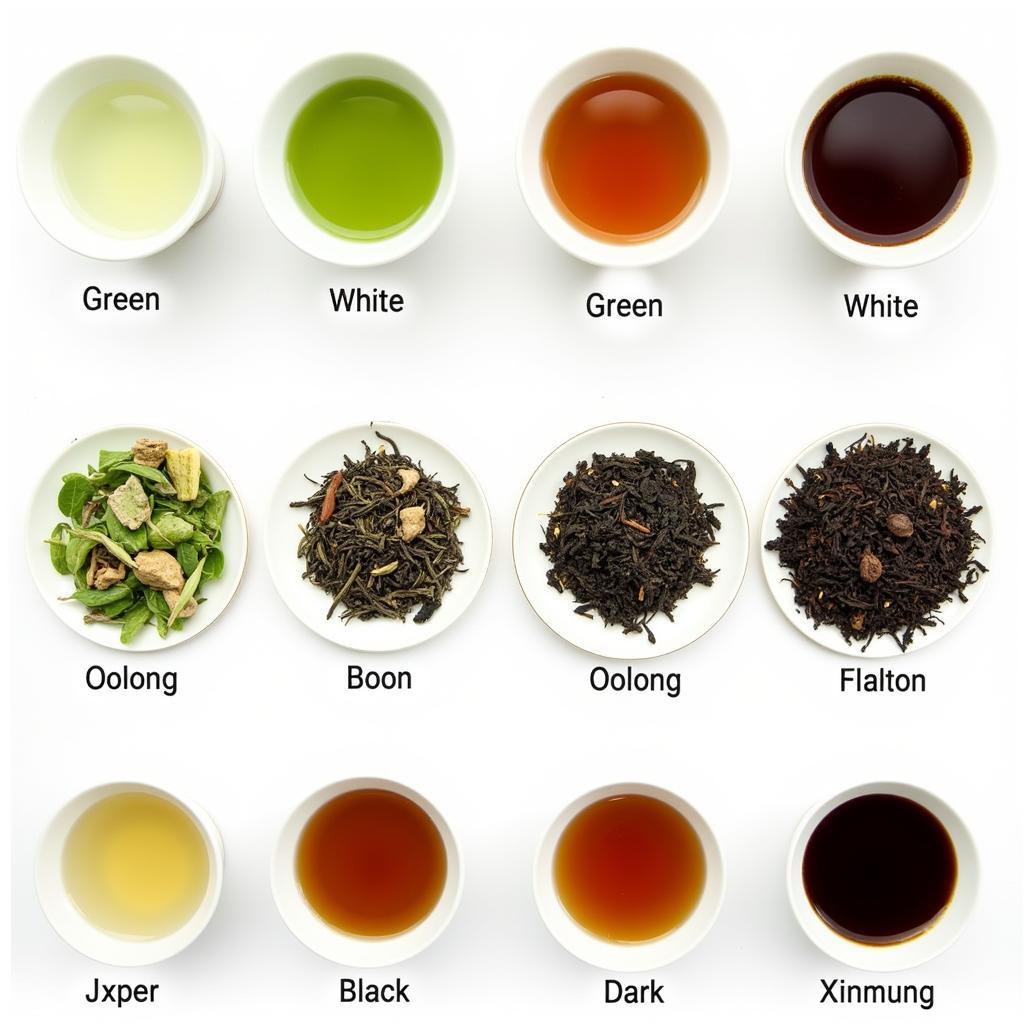The color of tea is a fascinating subject, encompassing a wide spectrum of hues and shades. From the vibrant green of a delicate sencha to the deep, rich brown of a robust pu-erh, what is the color of tea, exactly? Well, it’s more complex than you might think! This article explores the diverse world of tea colors, delving into the factors that influence them and what those colors can reveal about the tea itself. what color shoes go with a teal dress
The Many Hues of Tea: From Pale Yellow to Deep Black
Tea, derived from the Camellia sinensis plant, doesn’t inherently possess a single definitive color. Several factors contribute to its eventual hue, including processing methods, oxidation levels, and the tea variety itself. Broadly, tea colors can be categorized as follows:
- Green: Green teas are known for their vibrant, grassy green hues, achieved by minimal processing and limited oxidation.
- Yellow: This rare tea type undergoes a unique “smothering” process, resulting in a mellow, slightly sweet liquor with a light yellow color.
- White: White teas, comprised of young buds and leaves, are lightly processed and exhibit delicate, pale yellow to near-white infusions.
- Oolong: Oolong teas offer a wide range of colors, from light green to deep amber, depending on the degree of oxidation they undergo.
- Black: Black teas are fully oxidized, resulting in a robust, dark brown to black liquor.
- Dark (Pu-erh): Dark teas, such as pu-erh, undergo post-fermentation, resulting in earthy, complex flavors and deep brown to black colors.
 Tea Color Variety
Tea Color Variety
What Determines the Color of Tea?
The primary factor influencing tea color is the level of oxidation. Oxidation is a chemical process that occurs when tea leaves are exposed to air. Think of it like a sliced apple browning – a similar process is at work with tea.
Oxidation and Its Impact
- Minimal Oxidation: Green and white teas undergo minimal oxidation, preserving their fresh, green characteristics and resulting in lighter hues.
- Partial Oxidation: Oolong teas are partially oxidized, allowing for a spectrum of colors and flavors, from floral and light to rich and complex.
- Full Oxidation: Black teas are fully oxidized, producing the dark, robust flavors and colors they are known for.
- Post-Fermentation: Dark teas, such as pu-erh, undergo a unique post-fermentation process, which further darkens their color and contributes to their earthy, complex flavor profiles.
Beyond Oxidation: Other Influencing Factors
While oxidation plays a key role, other factors can also impact tea color:
- Tea Variety: Different cultivars of Camellia sinensis can naturally exhibit slight variations in color.
- Growing Conditions: Factors like altitude, soil composition, and climate can influence the chemical composition of tea leaves, impacting their color.
- Processing Methods: Specific processing techniques, such as withering, rolling, and firing, can affect the final color of the tea.
- Brewing: Water temperature and brewing time can also affect the color of the brewed tea. Over-brewing, for example, can result in a darker, more bitter infusion.
what is the color of teak wood
What Does the Color of Tea Tell You?
The color of tea can offer valuable insights into its flavor profile and potential benefits.
- Lighter Teas: Green and white teas are often associated with delicate, fresh flavors and are rich in antioxidants.
- Oolong Teas: The range of colors in oolong teas reflects their diverse flavor profiles, which can vary from floral and light to rich and toasty.
- Darker Teas: Black and dark teas tend to have bolder, more robust flavors and offer potential benefits for digestion and heart health.
Conclusion: A Kaleidoscope of Colors and Flavors
The color of tea is not just an aesthetic feature; it’s a window into the complex interplay of factors that shape its unique character. From the delicate greens to the deep browns, exploring the world of tea colors is a sensory journey that reveals a rich tapestry of flavors and aromas. So, the next time you brew a cup, take a moment to appreciate the color of your tea – it tells a story. What is the color of tea you enjoy most?
FAQ
- Does the color of tea affect its caffeine content? Not directly. While darker teas are often perceived as having more caffeine, the caffeine content varies based on several factors, including the tea variety and brewing method.
- Can I change the color of my tea during brewing? Yes, brewing time and water temperature can influence the color of the brewed tea.
- Why does my green tea sometimes turn brown? This can happen if the tea leaves are over-brewed or if the water is too hot.
- Is there a specific color that indicates high-quality tea? Not necessarily. Quality is determined by a combination of factors, including growing conditions, processing methods, and flavor profile.
- What is the rarest tea color? Yellow tea is considered one of the rarest tea types, due to its specialized processing method.
where is colorado steak company
Situations that often raise questions:
- When brewing tea at different temperatures or times and noticing color variations.
- When comparing different types of tea and observing their distinct colors.
- When trying to understand how processing affects the final color of tea.
Suggestions for other articles on our website:
- You might also be interested in learning more about the what is the color of teak wood.
- Or perhaps you’d like to explore the different how high is steamboat colorado.
Call to action:
For any assistance, please contact us at Phone Number: 0373298888, Email: [email protected] or visit us at 86 Cau Giay, Hanoi. We have a 24/7 customer service team.

